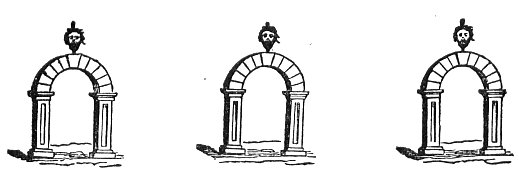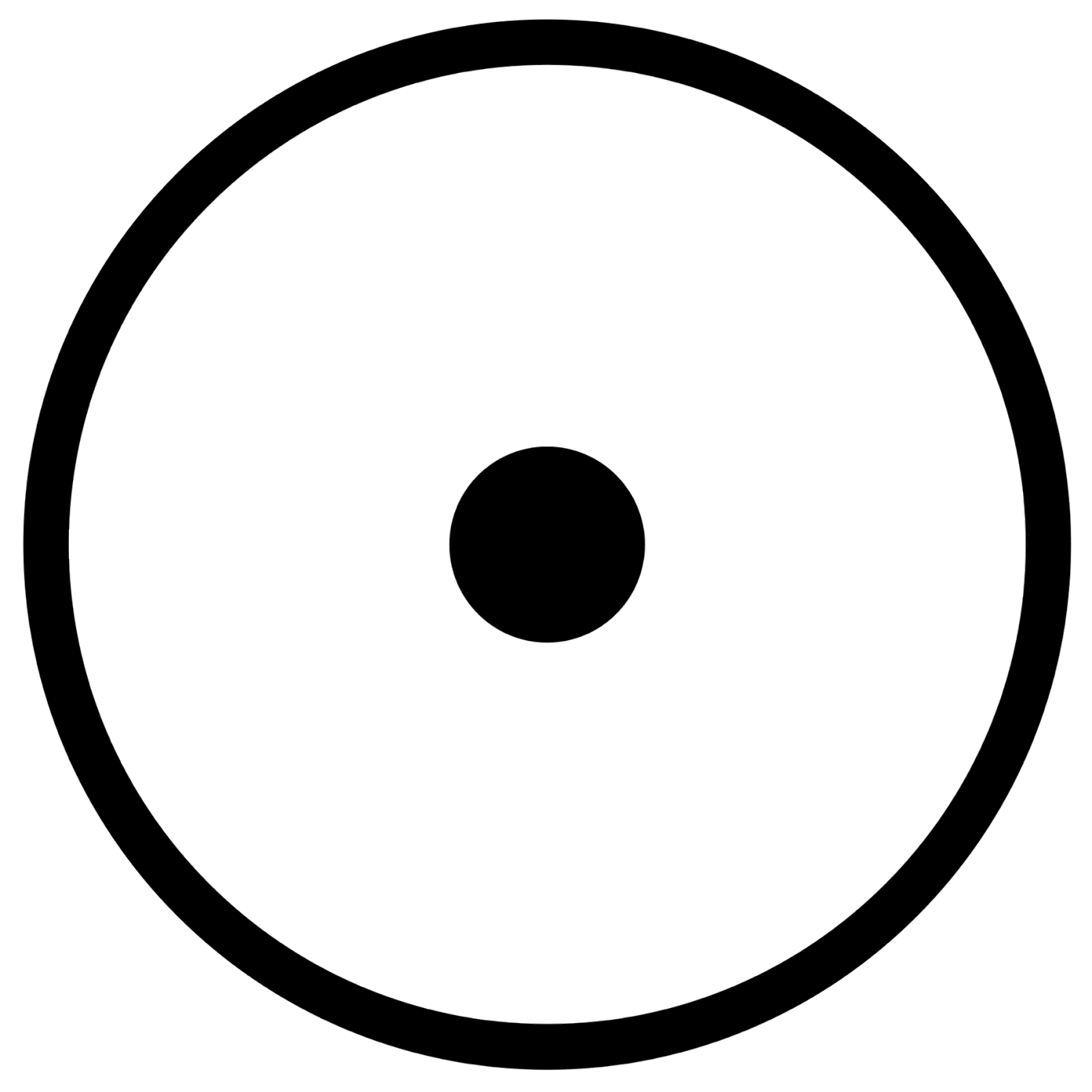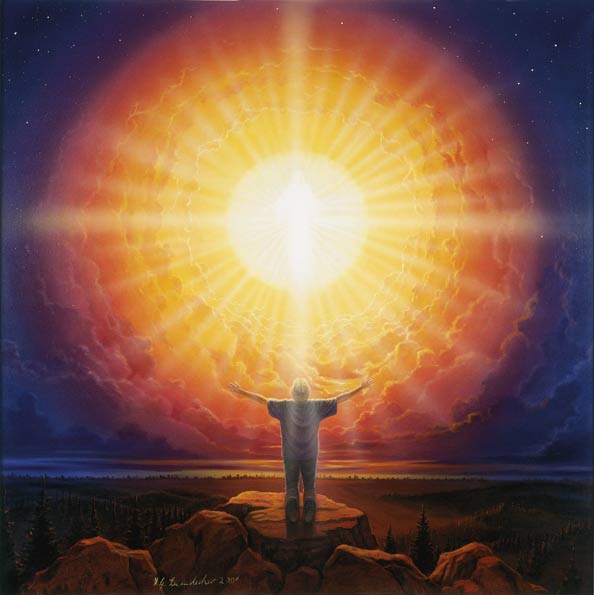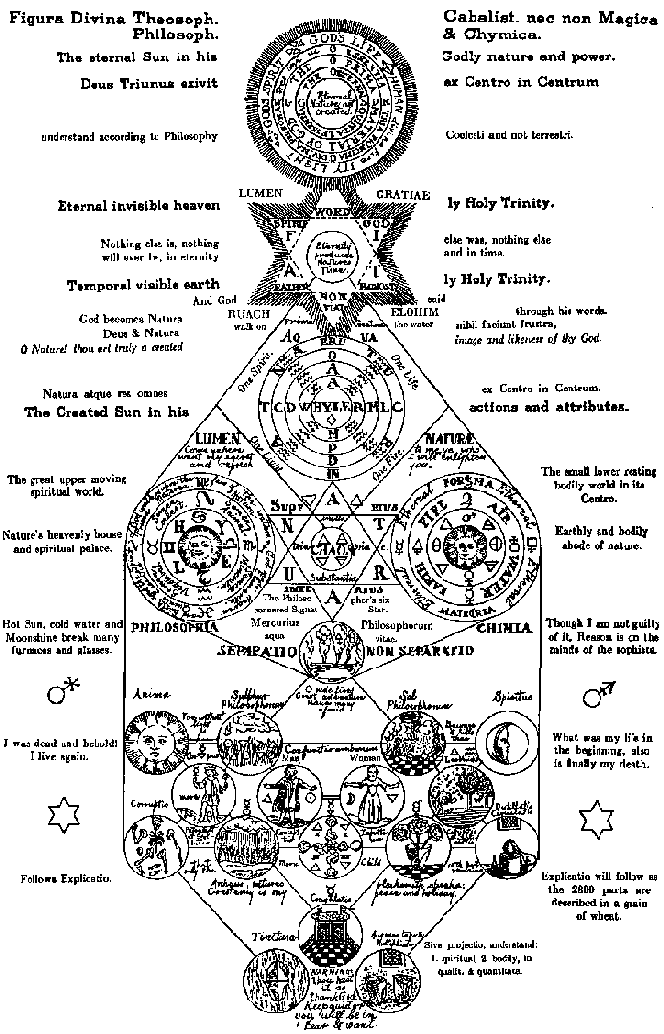TABLE I, Figures 1-11.
TABLE II, Figures 12-51.
p. 146
imaginable. Figure 20 represents the outpouring of the upper and spiritual life into manifestation. Figure 21 represents darkness, for it is the loosening of the subterrene destructive principle. Figure 20 is also the symbol of day, and Figure 21 of night.
Figure 22 is a symbol of water; Figure 23 is the complete universal character of light and darkness. The upright triangle represents Schamayim; the inverted triangle the dark earth which imprisons the infernal subterranean fire. It is “The First Day of Creation,” or the time of the separation of Schamayim and Ares. Figure 24 represents the six days of creation and proves that the elements are an outflow of the Divine Fire which, breaking up, becomes the substances of the tangible universe, as signified in Figure 25.
Figure 26 is the character of the air, showing that air is born out of the Eternal Light and the ethereal water. Figure 27 is the character of water. It is the inversion of Figure 26, indicating that its origin is from the lower fire and not the higher. Its upper part signifies that water does not lack the Divine element, but as a universal mirror reflects the heavenly influences. Figures 28 and 29 are symbols of salt, showing that it is both fire and water in one. Figure 30 is the character of fire in all its attributes, and Figure M (the same inverted), water in all its powers. Figure 32 is the character of salt in all its attributes. Figure 33 represents both gold and the sun. Their essential natures are identical, being formed from the first fire out of Schamayim. They are perfect, as can be seen from their symbol, for no more perfect form can be produced out of the dot than the circle.
Figure 34 is the character of the greater and lesser worlds; as the dot is surrounded by its circumference, this world is surrounded by Schamayim. Man (the Little World) is included in this symbol because his inner nature is potential gold (Aphar Min Haadamah), which gold is his eternal indestructible spiritual body. Gold is the masculine principle of the universe.
Figure 35 is the character of silver and the moon. It signifies that silver (like gold) is a perfect metal, except that the red part of its nature is turned inward. Silver is the feminine principle of the universe.
Figure 36 is the character of copper and Venus; Figure 37, of iron and Mars; Figure 38, of tin and Jupiter; Figure 39, of lead and Saturn; Figure 40, of Mercury (both the planet and the element); Figure 41, of antimony, the key metal of the earth itself; Figure 42, of arsenic; Figure 43, of sulphur; Figure 44, of cinnabar; Figure 45, of quicklime; Figure 46, of nitre; and Figure 47, of vitriol. Figure 48 is the character of sal ammoniac, which element derives its name from the Temple of Jupiter Ammon in an Egyptian desert, where it was found. Figure 49 is the character of alum; Figure 50, of alkali, a name of Arabian origin; and Figure 51, of sal tartar, a substance possessing great occult virtue.
TABLE Ill, Figure 52. The eight globes and the central square represent the seven days of creation. The three worlds wherein creation occurs are symbolized by three concentric rings. The German words in the outer ring are extracts from the first chapter of Genesis. The words around the outside of the outer ring are The First Day. The four small globes inside the outer ring deal with the abstract phases of creation. The upper globe containing the triangle encloses the words Heaven and Earth. The globe to the right contains the word Light, and the one to the left, Jehovah Elohim in the upper part and Darkness in the lower part. The globe at the bottom contains the word Day in the upper half and Night in the lower.

Moe is the founder of GnosticWarrior.com. He is a father, husband, author, martial arts black belt, and an expert in Gnosticism, the occult, and esotericism.











